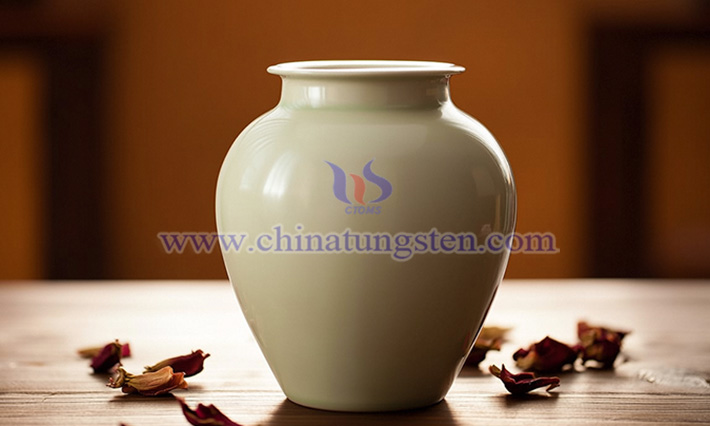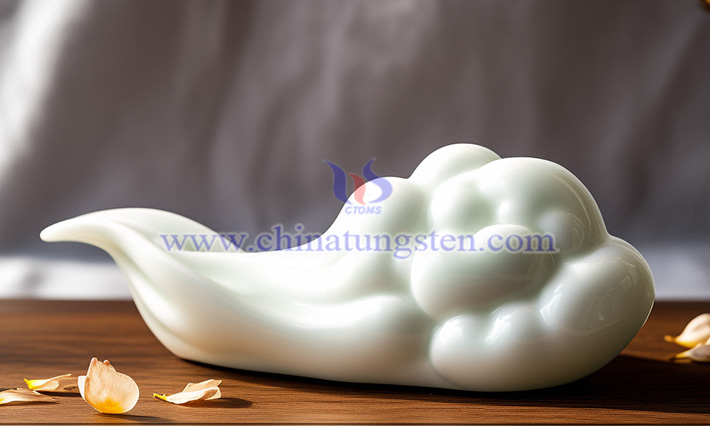Ammonium Metatungstate: Illuminating the Quality of the Ceramics Industry
- Details
- Category: Tungsten Information
- Published on Wednesday, 30 April 2025 19:20
Ceramics, one of the greatest inventions in human history, have evolved over thousands of years from simple household items to critical materials in industries, technology, and art. From everyday tableware and teaware to architectural tiles and sanitary ware, and even key components in aerospace and electronics, ceramics are ubiquitous. Behind the thriving modern ceramics industry, an "invisible hero" plays a vital role: Ammonium Metatungstate (AMT). Though unfamiliar to the general public, AMT significantly enhances ceramic performance and drives industry progress.

I. Basic Information on Ammonium Metatungstate (AMT)
CTIA GROUP LTD's Ammonium Metatungstate, with the chemical formula H28N6O41W12, is a compound formed by ammonium cations and tungstate anions. It appears as a white or slightly yellowish crystalline powder, a color influenced by its molecular structure and elemental composition. AMT is water-soluble, enabling rapid dispersion and participation in chemical reactions, which facilitates its use in various industrial applications.
In terms of chemical properties, AMT exhibits excellent thermal stability, withstanding high temperatures without decomposition or structural changes. This makes it ideal for industrial processes involving high temperatures, such as ceramic sintering. During ceramic firing, AMT remains stable within the ceramic body, contributing to improved performance without degrading under heat.

AMT is produced through methods including neutralization, tungstic acid, ion exchange, and solvent extraction:
Neutralization Method: Tungstic acid reacts with ammonia to form an ammonium tungstate solution, which is pH-adjusted, concentrated, and crystallized. This method is simple but requires high-purity raw materials.
Tungstic Acid Method: Tungstic acid is dissolved in ammonia, heated to remove ammonia, and treated with acetic and nitric acid to adjust pH. The solution is concentrated, cooled, and precipitated with ethanol to yield AMT.
Ion Exchange Method: Tungstate ions are adsorbed by resin, offering high purity but at a higher cost, suitable for high-end applications.
Solvent Extraction Method: Organic extractants separate tungstate ions, offering high efficiency but posing environmental challenges.
Each method has distinct advantages and is suited to specific industrial needs.
II. How AMT Enhances Ceramic Quality
In ceramic production, the addition of CTIA GROUP LTD’s AMT significantly improves various properties, enabling ceramics to perform better across perse applications.
1. Enhancing Ceramic Strength
At a microscopic level, ceramic strength is closely tied to its crystal structure. When AMT is added to the ceramic body, it decomposes during high-temperature sintering, releasing tungsten atoms. These atoms distribute uniformly within the ceramic, influencing crystal growth by suppressing the formation of large crystals and promoting finer crystal structures. The refined crystals increase the number of grain boundaries—high-energy transition zones between crystals. These boundaries effectively impede crack propagation. When external forces are applied, cracks encounter grain boundaries, forcing them to change direction and dissipate energy, significantly enhancing ceramic strength. In architectural ceramics, AMT-enhanced tiles exhibit improved flexural strength, withstanding greater pressure and impact, reducing the risk of cracking, and extending service life, especially in high-traffic public spaces.

2. Improving Ceramic Wear Resistance
AMT enhances wear resistance by increasing surface hardness. During sintering, tungsten atoms from AMT decomposition dissolve into the ceramic lattice, forming a solid solution. This causes lattice distortion, increasing resistance to dislocation movement—linear defects linked to plastic deformation. By hindering dislocation motion, the ceramic becomes less prone to plastic deformation, resulting in higher surface hardness. This makes AMT-treated ceramics ideal for applications requiring durability against abrasion.
3. Boosting Ceramic Heat Resistance
Ceramic performance in high-temperature environments is critical, and AMT improves heat resistance by reducing the thermal expansion coefficient, which measures dimensional changes with temperature. In high-temperature settings, increased atomic vibration expands the material. A high thermal expansion coefficient can cause excessive thermal stress during rapid temperature changes, leading to cracking or damage. Tungsten in AMT, with its low thermal expansion coefficient, stabilizes the ceramic lattice when incorporated, reducing the overall thermal expansion coefficient and enhancing thermal shock resistance.

4. Increasing Ceramic Specific Surface Area
Specific surface area—the total surface area per unit mass—is crucial for ceramics in applications like catalysis and adsorption. AMT increases specific surface area by influencing the ceramic’s microstructure during production. Fine particles from AMT decomposition act as nucleation sites, promoting the formation of porous structures. These pores significantly increase the surface area, providing more active sites for chemical reactions. For example, in honeycomb ceramics used as catalyst supports, AMT addition enhances the specific surface area, allowing greater loading of active catalytic components. This improves catalytic efficiency in applications like automotive exhaust purification and industrial waste gas treatment, reducing environmental pollution by facilitating harmful gas conversion.
- Chinatungsten Online: ammonium-metatungstate.com
- CTIA GROUP LTD: en.ctia.group
- Tungsten News & Price: www.ctia.com.cn
- Molybdenum News & Price: news.molybdenum.com.cn
- Tel.: 86 592 5129696; Email: sales@chinatungsten.com



 sales@chinatungsten.com
sales@chinatungsten.com